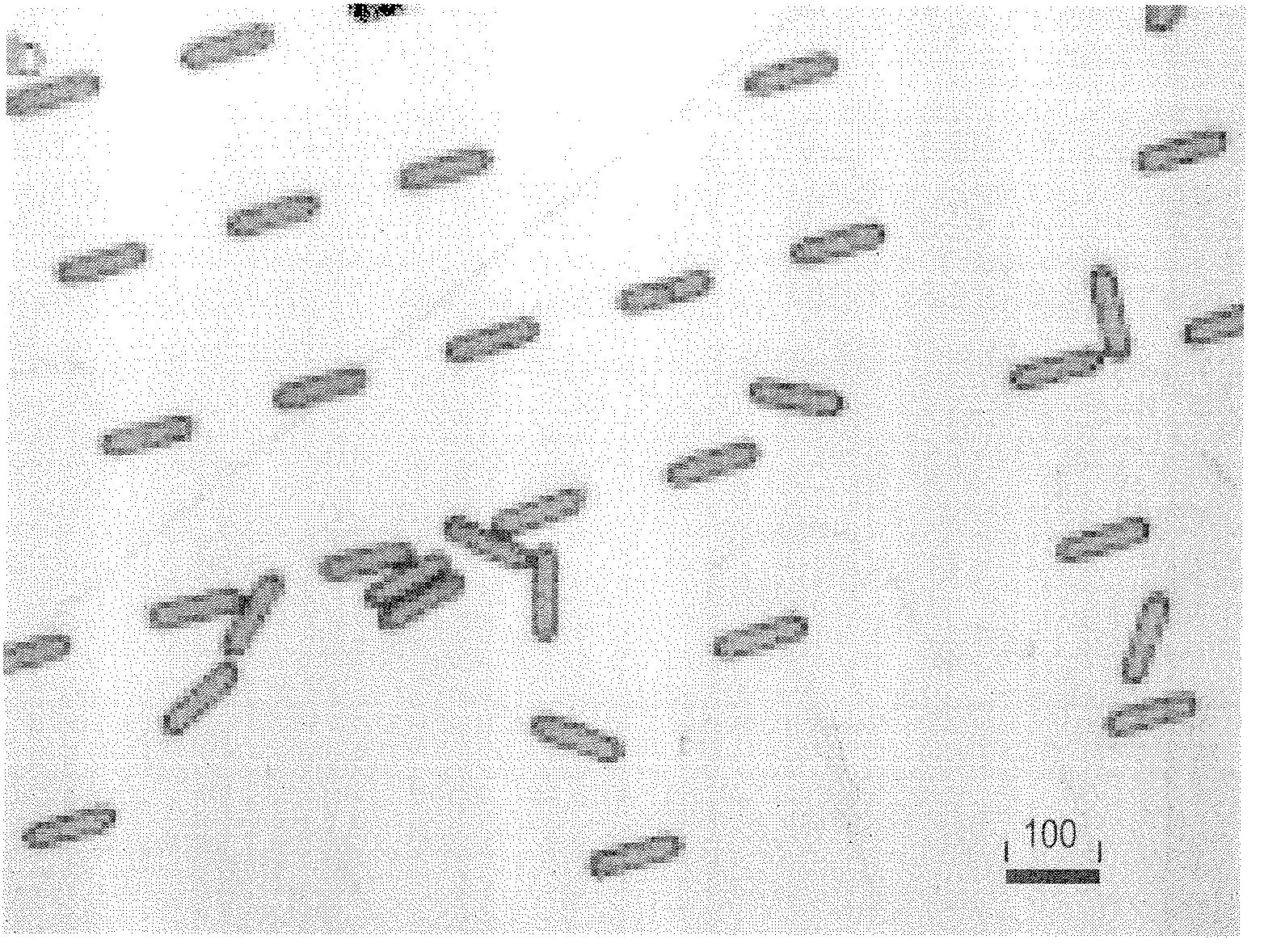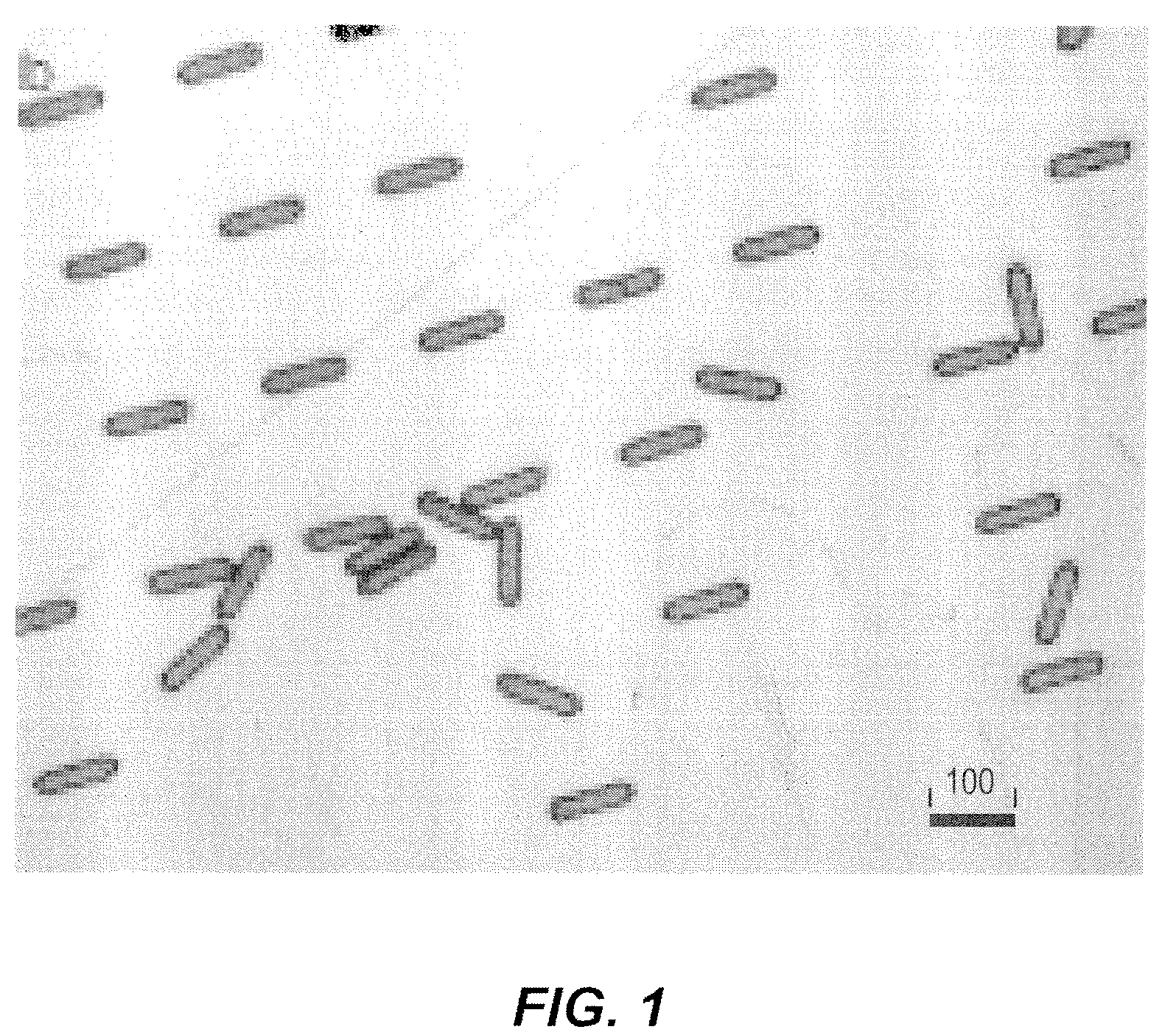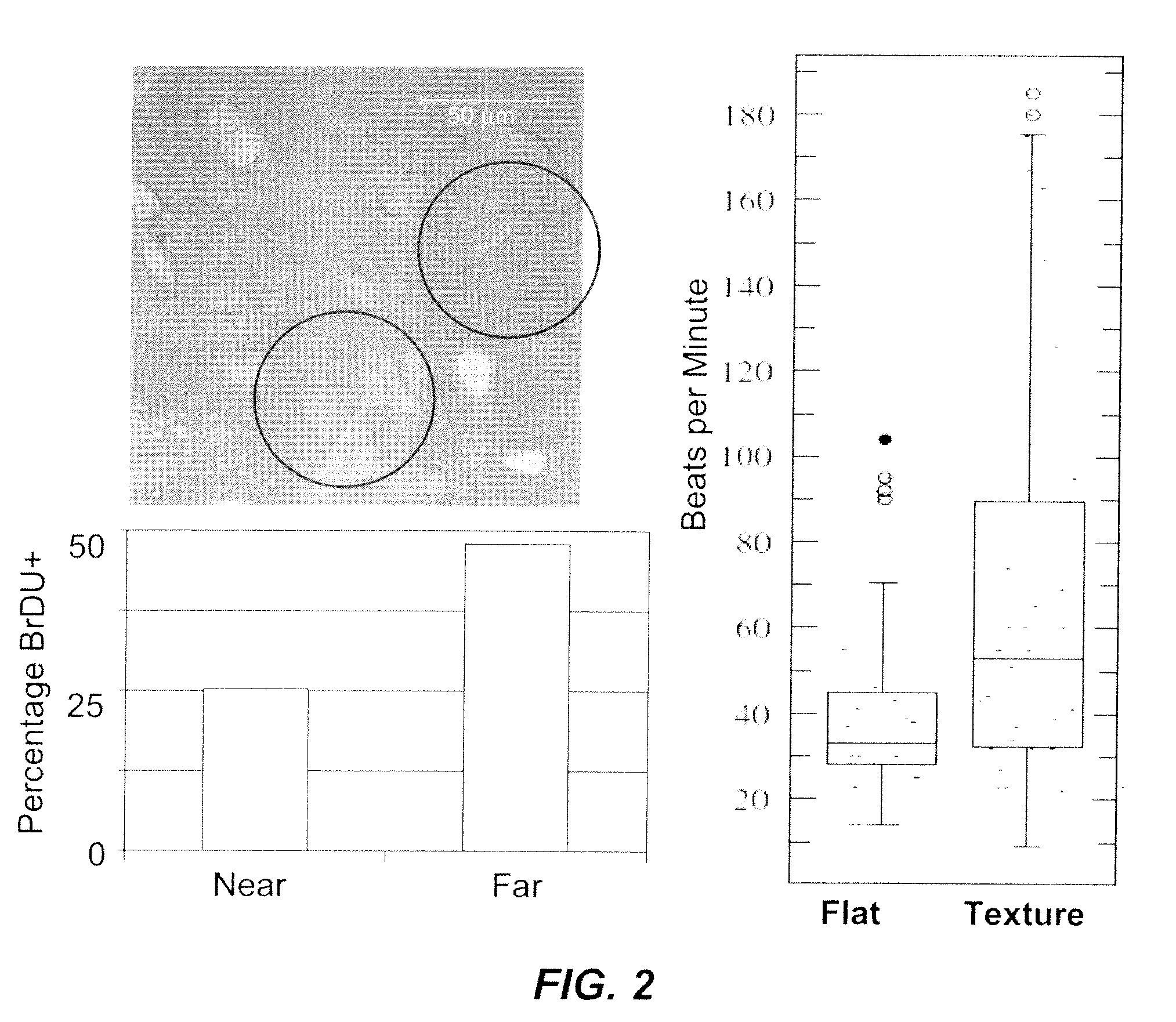Temporal release of growth factors from 3D micro rod scaffolds for tissue regeneration
a technology of growth factors and scaffolds, applied in the direction of prosthesis, peptide/protein ingredients, drug compositions, etc., can solve the problems of poor force production, failure of random seeding of cardiac cells into matrices or hydrogels, and insufficient function of artificial tissue, so as to promote cell survival and promote cell survival. the effect of differentiation
- Summary
- Abstract
- Description
- Claims
- Application Information
AI Technical Summary
Benefits of technology
Problems solved by technology
Method used
Image
Examples
example 1
Effect of Biodegradable Microrod Scaffolds on Myocyte Organization and Function
[0085]Microstructure Size
[0086]Microstructures with the volume (cross-sectional area 15×15 μm2, length 100 μm) but varying in stiffness (tensile moduli 0.01 kPa to 1 GPa) are used and fabricated as described below. All experiments are repeated with 5 primary cultures for statistical analysis.
[0087]Microstructure Stiffness
[0088]PLGA / PCL blends are initially chosen because this material can easily be microfabricated, is biocompatible, has a tunable modulus, and can degrade and release drug over a suitable time period (−2 weeks). Specifically, the effects of MRS made from polymer blends of varying stiffness are compared. The stiffness of the polymer MRS can be modulated in the proposed range by varying the PLGA co-polymer ratio and incorporation of a less stiff PCL component. This systematic tuning in mechanical properties was recently demonstrated by Sung (2005). The following blends are initially used: 50 / ...
example 2
MRS Stiffness and NRVM Retention of the Organization and Cell Connectivity as the 3D-Architecture Degrades
[0111]Microengineered systems can be made to degrade over an intended time period. Given the appropriate biomaterial one can observe long-term maintenance of cellular organization with and without structural cues. The ability to microfabricate structures out of biodegradable materials (a PLGA co-polymer blend) (FIGS. 1 & 2; Snyder and Desai, 2001) and have achieved short-term cell organization has been demonstrated.
[0112]Control of Degradation by Selection Materials
[0113]MRS are manufactured from biodegradable materials instead of traditional microfabrication polymers such as PDMS or SU-8 to assess survival of tissue architecture after the topography disappears. Factors such as molecular weight, exposed surface area and crystallinity affect degradation rates (Lanza, 2000). Also, processing conditions have can alter degradation characteristics of a material. For instance, heat mo...
example 3
Effects of Microscaffolds Contractile Maturation and Proliferation on Mouse Embryonic Stem Cell Derived Cardiomyocytes (ESCM)
[0121]ESCM
[0122]Although cell-cell or cell-ECM interactions are important, how changes in the physical niches affect the differentiation capacity of these cells and their potential to form viable, robust cardiomyocytes remain unknown. The niche in which stem cells reside and differentiate is a complex physicochemical microenvironment that regulates cell function. The role played by three-dimensional physical contours was studied on cell progeny derived from mouse embryonic stem cells using microtopographies created on PDMS (poly-dimethylsiloxane) membranes. While markers of differentiation were not affected, the proliferation of heterogeneous mouse embryonic stem cell-derived progeny was attenuated by 15 m-, but not 5 m-high microprojections. This reduction was reversed by Rho kinase and myosin light chain kinase inhibition, which diminishes the tension genera...
PUM
| Property | Measurement | Unit |
|---|---|---|
| length | aaaaa | aaaaa |
| diameter | aaaaa | aaaaa |
| size | aaaaa | aaaaa |
Abstract
Description
Claims
Application Information
 Login to View More
Login to View More - R&D
- Intellectual Property
- Life Sciences
- Materials
- Tech Scout
- Unparalleled Data Quality
- Higher Quality Content
- 60% Fewer Hallucinations
Browse by: Latest US Patents, China's latest patents, Technical Efficacy Thesaurus, Application Domain, Technology Topic, Popular Technical Reports.
© 2025 PatSnap. All rights reserved.Legal|Privacy policy|Modern Slavery Act Transparency Statement|Sitemap|About US| Contact US: help@patsnap.com



